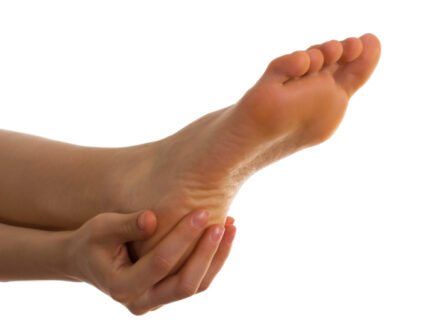Angiokeratoma of Fordyce is typically asymptomatic disease which consist of blue to red papules varying in size from 2 to 5mm along scaly surface on the scrotum, shaft of penis and/or inner thighs. As a result of this condition along many other general reasons; black spots appear on the skin of the scrotum which are usually made up of expanded or dilated blood vessels. On touch these feel bumpy and rough and initially appear to be red in color and later turns to deep black. These spots are harmless and not concerned when shows no additional symptoms. In this case these spots may require no treatment or generally a simple fix could be enough to treat this benign cause.
One need to consult a physician when these black spots tend to change with no apparent reason or may cause pain or discomfort.
These black spots resulted due to the common causes can be eliminated with the simple treatments. As it is very rare that these spots indicate a serious medical situation such as cancer, but every appearance on the ski should be ruled out on immediate basis by the proper diagnosis.
Blood Blisters Symptoms
These spots generally appear in the form of clusters and can be as many as hundred (100) at a time on the scrotum. These may result in bleeding if get scratched but otherwise these cause no pain at all. Most of the patients only complain about the dark spots with no other additional symptoms. It is considered that if these spots are the result of Angiokeratoma of Fordyce then the co-related symptoms will only appear at the elderly age.
In addition to black spots a few signs may appear in many patients which are enlisted below;
- Sharp pain: in the hands and feet, resulted from vigorous activity or exercise.
- Hypohidrosis: less sweating than the usual.
- Tinnitus: ringing bell sounds in ears.
- Prominent visual eye cloudiness.
- Bowel symptoms: diarrhea or constipation.
Blood Blisters Diagnosis
Merely a physical examination by the physician can indicate this disease but it is not considered enough in every situation. So the more complicated tests are required to give the proper diagnosis. Sometimes; depending upon the condition and related symptoms, patient may be referred to the dermatologist (skin specialist).
There are a number of tests which are usually performed to investigate the reason behind these black spots, such as;
- CBC: a complete blood count.
- LFT: Liver function test
- RFT: renal function test to investigate the proper functionality of kidneys.
- Screening: for sexually transmitted infections (STIs), such as HIV, hepatitis B and C.
- ESR: an erythrocyte sedimentation rate test, which is used to detect the rate of inflammation.
- Biopsy: in which samples of skin are taken for the study.
- Ultrasound of the lower abdomen and genital area in order to look at these parts for the underlying condition.
Blood Blisters Causes
These black spots on the scrotum are may be temporary or permanent. A number of most common causes are described below;
- Bruises can be caused due to the tissue injury on the scrotum leading to the formation of blood blisters.
- Dark or ingrown follicles can also results in this particular condition.
- Pimples and blackheads are usually harmless but poor hygiene can make the situation worst.
- Hyperpigmentation may cause the discoloration of the skin leading to spots on the skin.
- Angiokeratoma of Fordyce results in the lesions with clear edges randomly distributed on the scrotum. These lesions are often mistaken for the symptoms of sexually transmitted disease (STD) by the concern people which is stated as totally wrong diagnosis of the condition.
- Genital warts usually may appear as white or skin-colored bumpy papules resembling to cauliflower in appearance. However may have a dark color or darkened center.
- Scrotal dermatitis.
This is very rare that these black spots appear as a severe medical condition which can be diagnosed as skin cancer.
Blood Blisters Treatment
Usually this condition is asymptomatic and cause no abnormal experiences leading to no treatment. But if these spots may cause pain or irritation to some extent then consulting to the physician is the best choice to get these spots removed.
A number of removal techniques have been recommended by the professionals including;
Electro-desiccation and curettage (ED&C)
In this technique, a local anesthetic drug is being used to numb the area around the spots. The drug is applied with a cotton swab around the affected area. When the numbness is achieved, physician may use some tool to scrape the spots off and remove the affected tissues from the skin.
Laser removal
Many professionals recommend the use of laser technique involving “pulse dye laser” in order to remove the blood vessels which are the cause of these black spots.
Cryotherapy
In this therapy, firstly the tissues around the black spots are freeze out and then the spots are removed from the skin.
 Health & Care Information
Health & Care Information 


